Our findings after raising 102 Freedom of Information Requests to NHS Foundation Trusts.
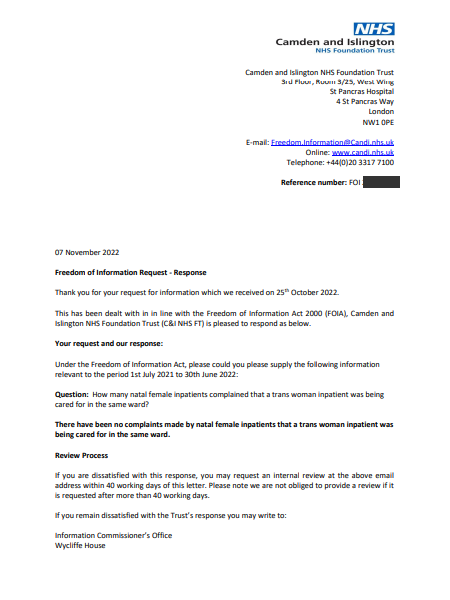
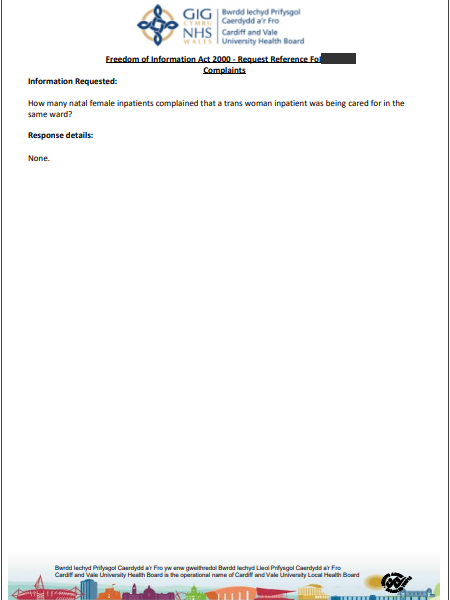
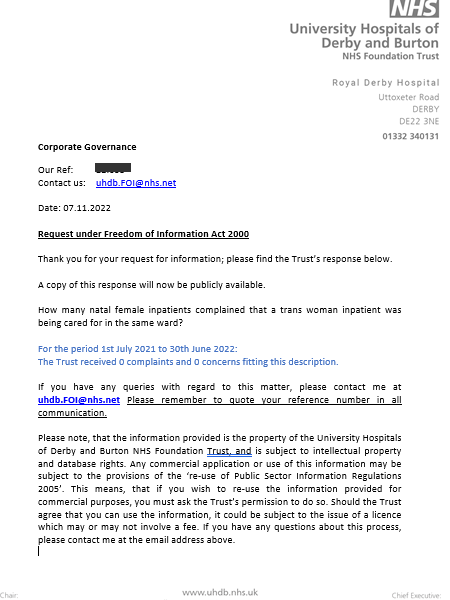
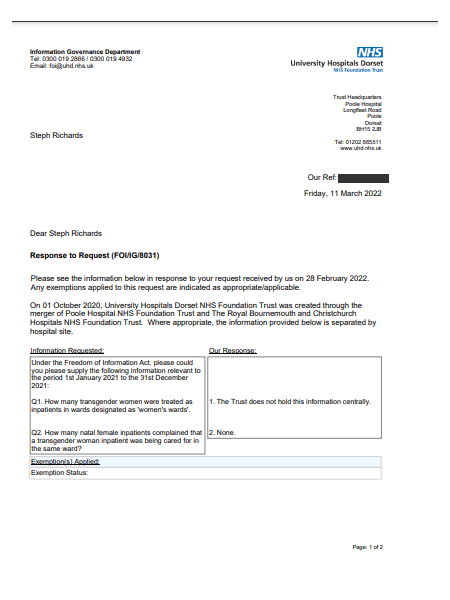
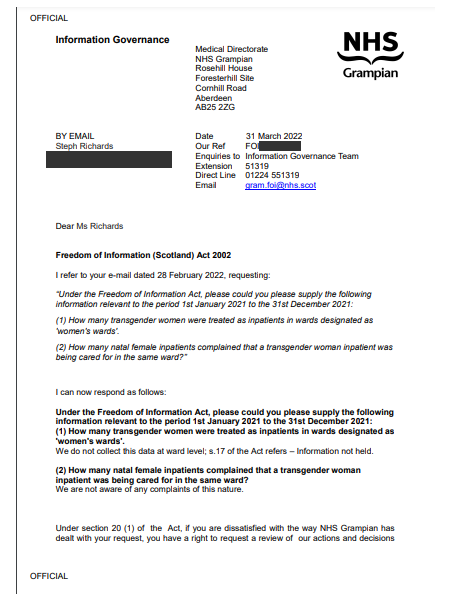
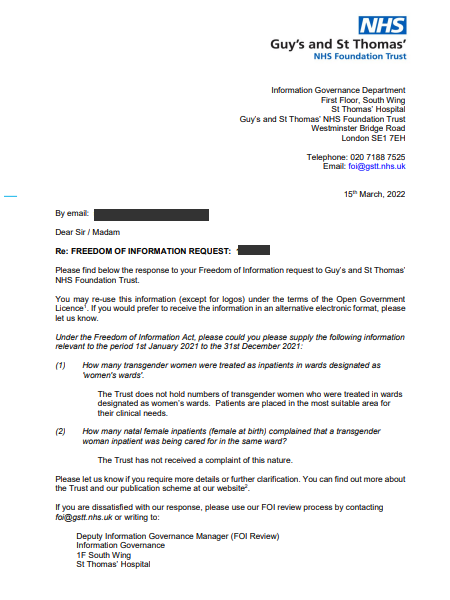
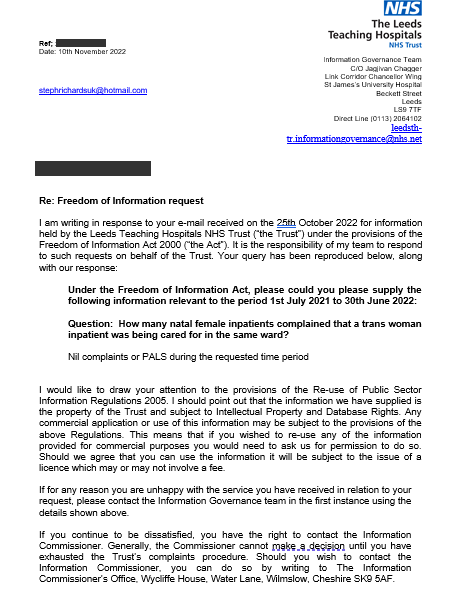
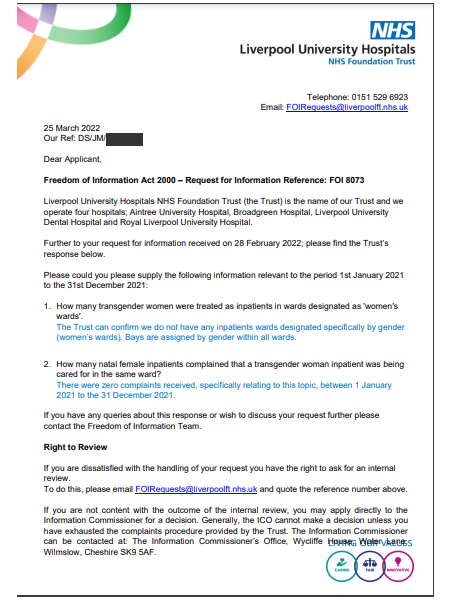
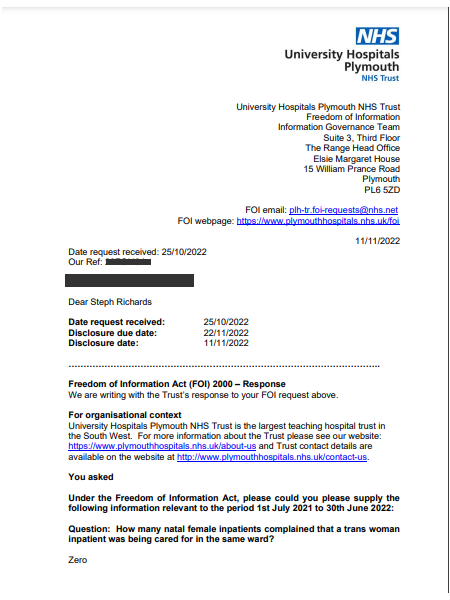
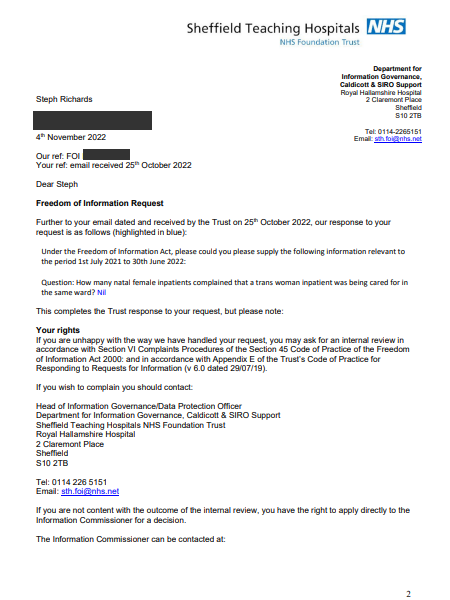
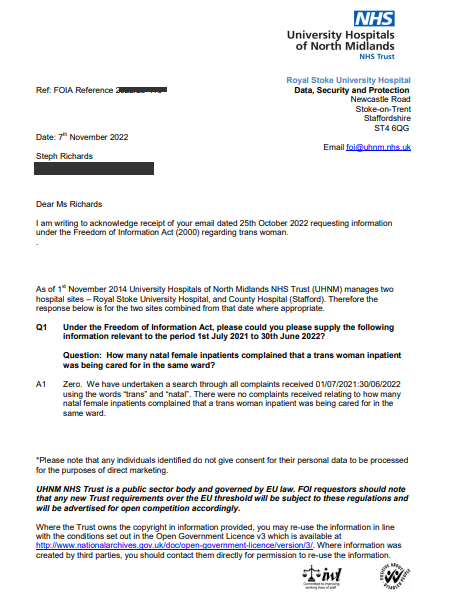
A few examples of the FOI requests that were sent out.
When anyone is referred to a hospital, they expect to be treated with respect, privacy and decency; obviously, many women prefer female doctors, nurses and facilities.
As a trans woman, I get that. Indeed, I have always had a female GP and invariably ask for female health practitioners. Most times, but not always, I get my wish.
But what happens when the worst-case scenario occurs, and we become an inpatient in a hospital?
Hospital wards have been “weaponised” by some with a trans-exclusionary agenda. Often referred to as ‘single-sex hospital wards’. Other alleged issues involve prisons, refuges, changing rooms, and even toilets, now all becoming a matter of public discussion.
In the UK, it’s like a new species of human being has manifested itself into society. True enough, a moral panic has erupted from nowhere because it is now realised trans women exist.
Of course, trans folk have existed for millennia and used hospitals, changing rooms and toilets without a whimper, but suddenly ‘trans women are a problem’.
Or are we?
Not according to my investigation, we are not – far from it, but before we get to the results of over one hundred Freedom of Information requests made to NHS Foundation Trusts, a short story.
A few weeks back, I experienced a haemorrhage, and when blood appeared from where it should not, I, like most of us, started to think the worst. I immediately did an online NHS E consult with my GP, and soon I was en route to a consultant who specialised in male urology. And this made sense to me because I knew full well that hospital doctors are specialists, not GP’s – and that hospital wards are invariably operated on a medical condition basis.
Trans men who are pregnant go to maternity wards which are not geared up for men but obviously, where else in a hospital can they give birth safely and have midwives and other experts on hand?
And for me, being in a men’s clinic was profoundly unpleasant, but there are times, (despite having had lower surgery) when I can’t buck the fact that I have a prostate.
This fact alone bursts the myth that trans women automatically find their way to gynaecology; it just doesn’t happen.
But now to those Freedom of Information Requests (FOIRs).
On December the 22nd, 2021, I made ten FOIRs to NHS Foundation Trusts (NHSFT) across the country, asking this question:
Dear Sirs,
Under the Freedom of Information Act, please could you supply the following
information relevant to the period April the 1st, 2020 to March the 31st 2021:(1) How many natal female inpatients complained that a trans woman inpatient was being cared for in the same ward?
The NHSFTs contacted were:
St Georges University Hospitals NHS Foundation Trust (1000 beds).
University Hospital Southampton NHS Foundation Trust (1362 beds).
Birmingham Women’s and Children’s NHS Foundation Trust (220 beds).
Hull University Teaching Hospitals NHS Trust (700 beds).
University Hospitals of Derby and Burton NHS Foundation Trust (1139 beds).
University Hospitals Birmingham NHS Foundation Trust (2700 beds).
Manchester University NHS Foundation Trust (2500 beds).
Royal Devon and Exeter NHS Foundation Trust (843 beds).
Nottingham University Hospitals NHS Trust (NUH) (1100 beds).
Liverpool University Hospitals NHS Foundation Trust (860 beds).
Most NHSFTs responded within twenty days (the standard statutory requirement), confirming they had not a single complaint concerning a trans woman sharing a ward with a woman.
However, some of my colleagues felt I should contact more NHSFTs to make sure there were no issues, so on the 28th of February 2022, I emailed fifty NHSFT’s (or Scottish/Irish equivalent) asking two different questions and changing the time period. I asked:
Dear Sirs,
Under the Freedom of Information Act, please could you please supply the following information relevant to the period January the 1st 2021 to the December the 31st 2021:
(1) How many trans women were treated as inpatients in wards designated as ‘women’s wards.’
(2) How many natal female inpatients complained that a trans woman inpatient was being cared for in the same ward?
The NHSFTs asked were in the following locations: London, Birmingham, Glasgow, Liverpool, Bristol, Newport (Wales), Sheffield, Leeds, Edinburgh, Leicester, Coventry, Bradford, Cardiff, Belfast, Nottingham, Kingston upon Hull, Newcastle upon Tyne, Stoke-on-Trent, Southampton, Derby, Portsmouth, Brighton, Plymouth, Northampton, Reading, Luton, Wolverhampton, Bolton, Aberdeen, Bournemouth, Norwich, Swindon, Milton Keynes, Southend-on-Sea, Middlesbrough, Peterborough, Sunderland, Warrington, Huddersfield, Taunton and East Kent Hospitals.
Again, I got a good response though all of those who replied said they did not hold the information regarding Q1 and that (as I experienced) they invariably treat to “medical condition” not “sex”.
In relation to Q2, as in the first wave of requests, no women complained about a trans woman in their ward.
Not one.
But the allegations about trans women in single-sex hospital wards don’t go away, so on October the 25th, 2022, a further forty-two FOIRs were made, changing the time period yet again and asking this question:
Dear Sirs,
Under the Freedom of Information Act, please could you please supply the following information relevant to the period July the 1st 2021 to June the 30th 2022:
Question: How many natal female inpatients complained that a trans woman inpatient was being cared for in the same ward?
Those contacted (by location or NHSFTs) were: Bedfordshire, Belfast, Berkshire, Birmingham, Bolton, Bournemouth, Bradford, Bristol, Camden & Islington, Cardiff & Vale, Central & North West London, Coventry & Warwick, Derby & Burton, Glasgow, Grampian, Guys & St Thomas, Calderdale and Huddersfield, Hull, Leeds, Liverpool, Lothian, Mid & South East Essex, Milton Keynes, Norfolk and Norwich University Hospital, North East London, North Midlands, Northampton, Nottingham, Plymouth, Portsmouth, Royal Brompton & Harefield Hospital, Royal Free, Sheffield, Somerset, South London and Maudsley, South Tees, Southampton, Sussex, Swindon, UCL London, West London, and Wolverhampton.
Sadly, four NHSFTs did not reply even though they were chased up in early December. Still, the results are apparent as thirty-eight did, and the results were precisely the same as before.
No complaints, none, zilch.
My investigations cover a time period of two years and three months, and in total, I made one hundred and two FOIRs. No NHSFT has reported a woman complaining about a trans woman in her hospital ward from any of the FOIRFOIR How to make a freedom of information (FOI) request You have the right to ask to see recorded information held by public authorities. https://www.gov.uk/make-a-freedom-of-information-request requests I made.
I have now reached the time when I have to be responsible – making FOIR’s costs the NHS money, and this would be better spent on patient care rather than responding to the same question time and time again.
In fact, I have discovered only a few cases where a trans woman did share a ward with a natal female, as invariably, trans people are segregated into single occupancy side rooms and often, that works out well.
A few weeks ago, I spoke to Jane, who happens to be qualified in the legal profession and a true feminist, who told me she was in a eight bed general ward with a trans woman who apparently was “a right laugh”.
I asked, “any issues about privacy when on the ward”?
“That’s what bed curtains are for” Jane snapped with a smirk on her face. We both laughed – yes, it was a silly question.
But sadly, being trans and put in a side room doesn’t always work out well.
On December the 11th, 2021 the Twitter account ‘Sex Not Gender Nurses and Midwives’ (@sexnotgenderNM) tweeted this thread:
We’ve had an upsetting story shared to our website, and we’d like to share it. This is why we need this conversation. Whilst we don’t agree that always placing Trans people in bays to their aligned gender is ideal (which we will discuss), this is an argument against side rooms.
Transgender lady had cardiac arrest and does because she was placed in a side room instead of a women’s open bay. Staff did not witness her deterioration because of her being placed in a side room.
When staff did notice the signs of ore cardiac arrest, it was later stages and it was difficult to get the cardiac arrest trolley into the side room. Lesson learnt was that she should first and foremost HAVE BEEN PLACED IN AN OPEN WOMENS BAY where her deterioration would have been recognised and earlier interventions could have saved her life.
She posed absolutely no threat to anyone, she presented and identified as a woman but staff put her in side room simply because they knew she was transgender and didn’t know what else to do. She died because of ignorance and thoughtlessness.
Everyone needs us to talk about this, and in a way that accusations of bigotry aren’t fired around. People’s lives and well-being depends on it. Thank you, to the person that submitted. And a reminder- we started this account because of poor outcomes for Trans people, too.
Respect, privacy and decency are not too much to ask when we are in the hospital, and I am sure management and staff do their best to ensure that is the case.
Several gender-critical “women’s” organisations campaign for ‘single sex spaces’ in hospitals.
They claim there is a problem.
They claim they are not transphobic.
After reading this investigative report, many, I suspect… will beg to differ.
Update: Our results featured in Pink News
Study of trans women in hospitals didn’t find one single complaint: ‘None. Zilch’
This week, health secretary Steve Barclay announced Conservative plans to ban trans women from female hospital wards – despite a study last year revealing that there had not been one single complaint made about the issue.
The report, published by TransLucent following the submission of 102 Freedom of Information requests to NHS foundation trusts, showed that not a single problem had been raised by fellow patients about transgender women on female wards in UK hospitals.






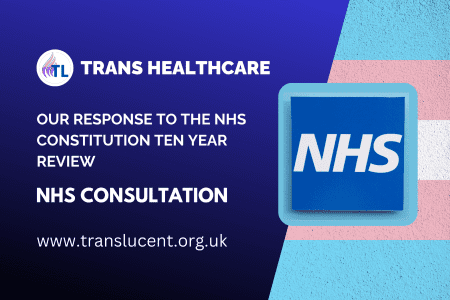

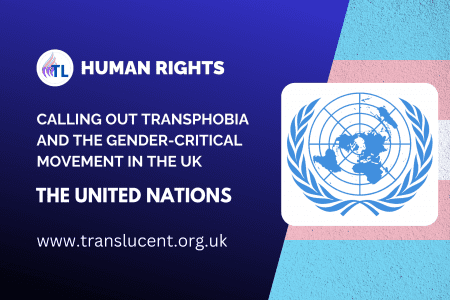
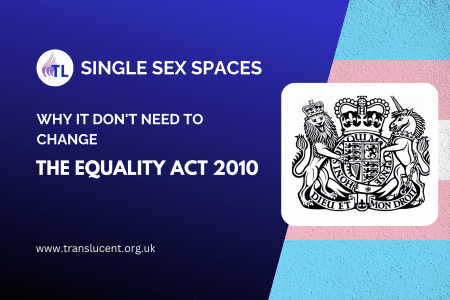

 To provide the best experiences, we use technologies like cookies to store and/or access device information. Consenting to these technologies will allow us to process data such as browsing behaviour or unique IDs on this site. Not consenting or withdrawing consent, may adversely affect certain features and functions.
To provide the best experiences, we use technologies like cookies to store and/or access device information. Consenting to these technologies will allow us to process data such as browsing behaviour or unique IDs on this site. Not consenting or withdrawing consent, may adversely affect certain features and functions.